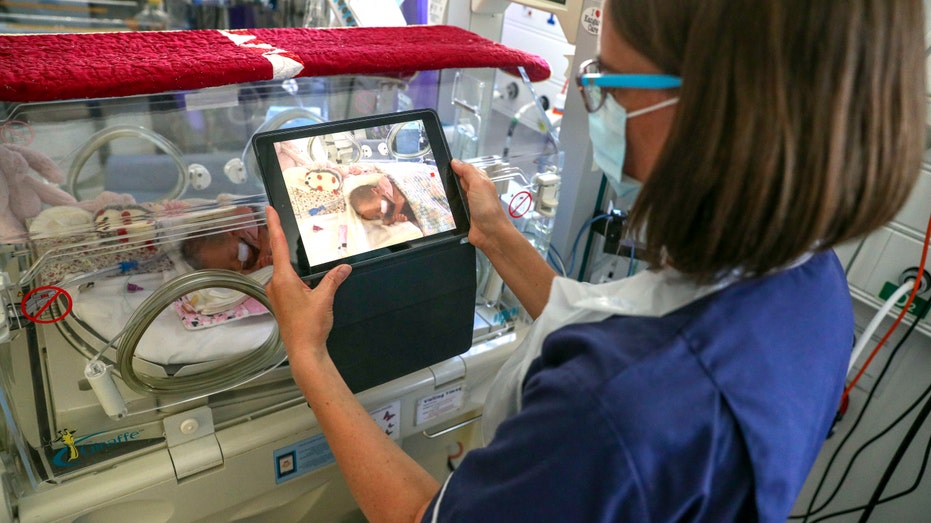How does telemedicine work?
Relatively new medical practice allows health care professionals to conduct virtual patient visits
Telehealth, or telemedicine, is a relatively new and rapidly expanding sector of medicine made up of digital health services.
Telehealth services, which are offered online, via phone and on mobile apps, allow health care professionals to conduct virtual visits with patients so they do not have to drive to an office. Many patients have been avoiding in-person visits during the coronavirus pandemic to reduce the spread of COVID-19.
"Telehealth is a valuable tool for patients to remotely receive healthcare from the convenience and comfort of their phone or computer," Dr. Will Kimbrough, national virtual medical director of U.S. primary care provider One Medical, told FOX Business. One Medical offers appointments in person, online, via phone or app.
One Medical's telehealth app has a "Treat Me Now" feature that offers a "digital symptom assessments for common concerns like rashes, cold/flu, UTIs, etc, easy appointment booking, prescription renewals, access to health records and more," he said.
TRUMP TOUTS TELEHEALTH IN CORONAVIRUS PANDEMIC FIGHT
Other apps work in similar ways but with different features and specifications. Many hospitals, health centers and insurance companies offer their own telehealth apps and services, though there are telehealth apps that are not affiliated with specific institutions.
Telehealth visits are also cheaper than regular visits. Researchers at the Sidney Kimmel Medical College of Thomas Jefferson University found that patients save an average of $19–$121 per visit in a 2018 study published by The American Journal of Emergency Medicine. The average cost of a telehealth visit is less than $80, a 2017 study from Health Affairs found.
MEDICARE EXPANDS TELEMEDICINE COVERAGE OVER CORONAVIRUS FEARS
"Even before Covid-19, there were a variety of telehealth platforms and apps available. These cover a wide range of medical problems, different interfaces for interacting with providers, and whether they’re tied to broader health systems or not," Kimbrough.
TELEHEALTH EMERGES AS CARE OPTION DURING CORONAVIRUS
He added that COVID-19 has prompted care facilities like One Medical to offer new features specific to the virus. Telehealth services are expected to see a year-over-year increase of 64.3 percent in 2020, according to an analysis by business consulting firm Frost & Sullivan.
Technology, in general, has played a large role in health care the pandemic, which has forced people to avoid all human contact, even in medical settings.

A nurse makes a video of a newborn baby in the maternity ward to send to the parents, as visiting hours are restricted because of the coronavirus pandemic at Frimley Park Hospital, in Camberley, England, May 22, 2020. (Steve Parsons/Pool via AP)
And while the pandemic has led to significant growth in telemedicine, many Americans are still skeptical of using digital health services because they are wary about getting inaccurate results. One 2016 University of California study in which medical professionals posed as patients found that remote doctors over 16 different telehealth apps misdiagnosed serious skin conditions.
GET FOX BUSINESS ON THE GO BY CLICKING HERE
Another problem medical professionals and patients face while using telehealth is a lack of human-to-human contact.
"The main initial challenge for a provider moving into telehealth for the first time is learning how to make the same level of human connection with their patients as they do in-person. There’s also a learning curve to get comfortable with determining what concerns can and can’t be managed remotely," Kimbrough said.
Kimbrough added that once the pandemic is over, "the changed regulations and increased general public acceptance of the valuable role of telehealth will remain intact."
"I anticipate ongoing demand for both virtual urgent care as well as some types of virtual primary care as we move forward, along with increased investment and interest in at-home devices and monitoring to enable even more types of care remotely," he said.
CLICK HERE TO READ MORE ON FOX BUSINESS




















